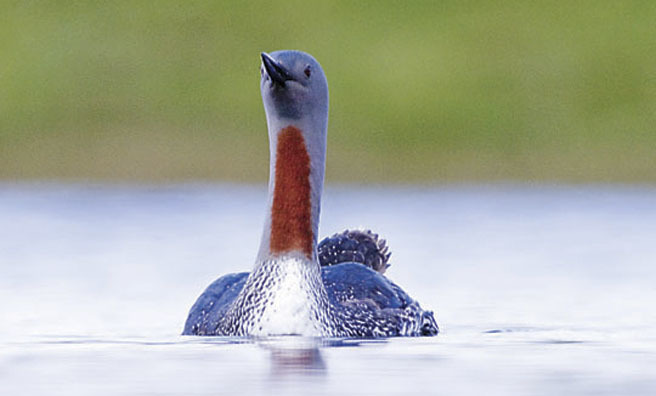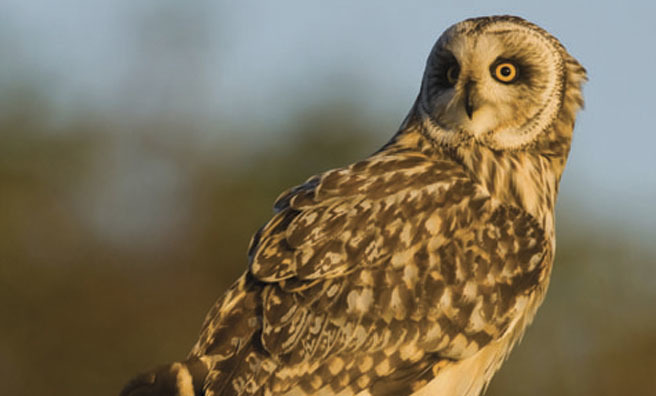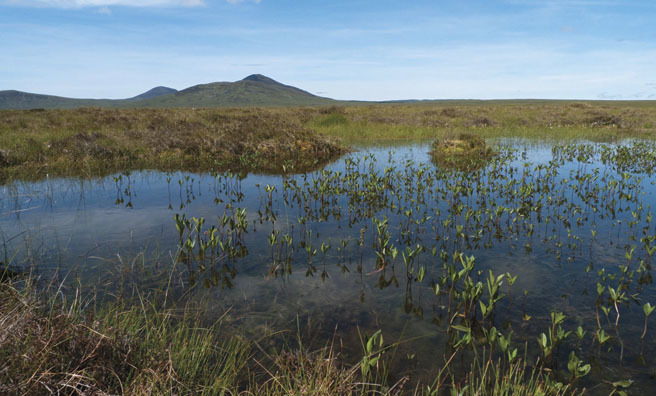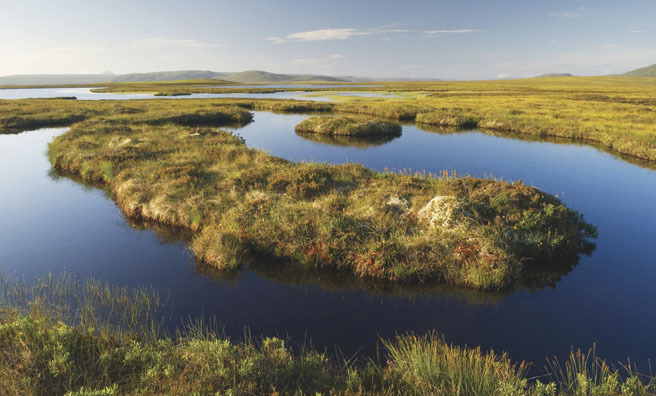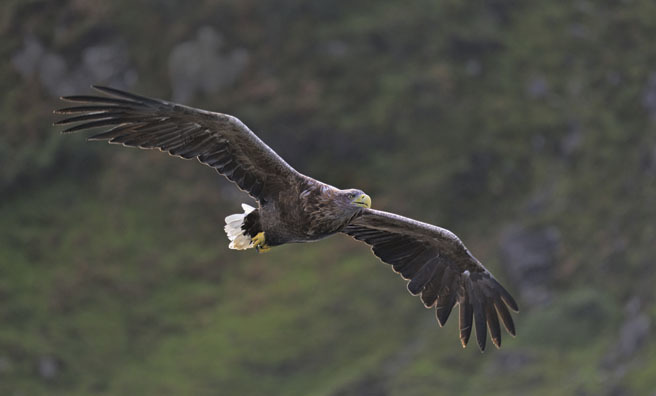Thrilling To Diver’s Call
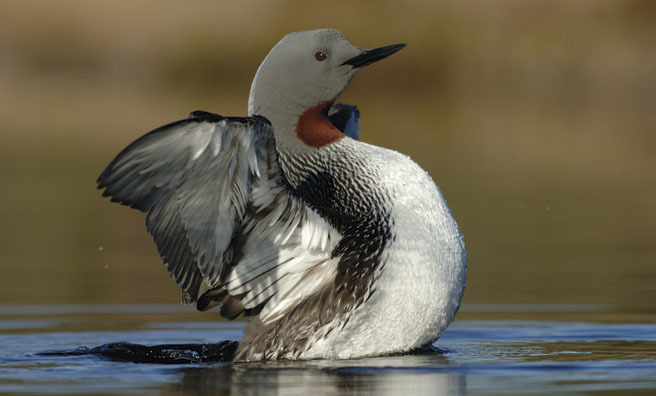
If you didn’t know what that sound is, at first hearing you could be forgiven for thinking that it is like the speech of the land itself, like blood, like breathing. Or perhaps nature’s pibroch.
It rises on a long, shallow woodwind curve and falls back on itself, but slowly; it skates across the surface of the lochan and dares the rocks on the far bank to make an echo of it. The rocks oblige.
Ah, but then the living call resumes before the echo finishes, and something primitive and ancient stirs and smoulders within the watcher prone in the tussocks with his eyes boring into the binoculars’ lenses and his chin in the peat. Rock, water, echo, bird – for a bird is the source of the wonder – are bound together in a transaction of wild elemental things, a transaction that proclaims territory, a spring and summer tenancy of transcendant, seductive magic. An absurd thought occurs to the watcher on that North Highlands shore with its far view of Orkney: “If the aurora borealis had a voice, it would sound like this.”
The source of the sound swims in circles so gently described that there is almost no ripple. It keeps low in the water, what I think of as “periscope depth”; the head and a little of the neck show themselves above the surface and a dark curve like an Orkney island follows the head and neck although it is not immediately clear that the two are connected.
The bird is delineated by a thin band of gold, the gift of the low, late sun
The lochan is smooth black glass, the bird is delineated by a thin band of mobile gold at the surface, the gift of the low, late sun. That call again, skating away to the rocks again, and echoing back to the bird again, the bird that turns to stare at the source of the echo.
Does the bird understand the echo? Does it know what’s going on when the echo plays back its voice? Does it like the effect it achieves, in which case, is it deliberate? Or is it baffled or irritated or both, and is it looking for another bird? I have seen something similar with whooper swans on Loch Dochart where there is a rock wall halfway along the north shore that echoes the birds’ calls, and it seems to me they return again and again over a morning to a point where the echo sounds, and they call to it.
The bird on the lochan stops and spins through 360 degrees. As it turns, the eye and the throat are lit in the same moment by a fluke of the late sun on the water, and both are deep, dark red. These then – the call, the ability to half submerge, the eye, the throat – are the hallmarks of Gavia Stellata, better known as the red-throated diver. In the right setting, in the right light, at the right time of day, a calling red-throat is unambiguously thrilling.
I have never found it helpful to try to lay down definitions of what is wild, what is wild land, and what is wilderness. For reasons I don’t begin to understand, it is the question I am asked more than any other. The trite answer would be to summon Louis Armstrong’s response to the reporter who asked him to define “swing”. “If you have to ask,” he said, “you ain’t got it.” But if all my inquisitors had been gathered on that May evening by a lochan on the edge of the Flow Country, lulled into enchantment by the spinning bird of the up-tilted bill and red eye with its ghost-voice rising to its modest pitch of intensity and falling back into threnody even as it begins to overlap its own echo, I could gesture my wordless answer, for there is one of the wilderness’s most eloquent ambassadors.
Their voices drifted in and out of the echoing zone
Something with a voice like the love-child of a frog and a goose grazed the air a few feet above my head with the lash of fast wings. Then its low-slung hunched silhouette crash-landed boisterously onto the water, and like Andersen’s ugly duckling suddenly metamorphosed into composed elegance: not a swan but a second red-throat. The frog-goose gargle is the bird’s out-of-character flight contact-call. For the next hour, while the sky drained of almost all its light and colour and the lochan paled to milk-white, the two birds circled each other, calling. As their swimming circles drifted to and fro their voices drifted in and out of the echoing zone, so that a kind of gently hypnotic chaos infused the pattern of their calls. It is fair to say I was hypnotised.
I dragged myself away around 10pm while there was still just enough light left to follow a ragged deer track through the rocks, grasses, and ominous pools of imponderable depths while the diver calls receded into the gathering folds of night, and their last distant utterance was drowned out by the sudden overhead paradiddle of a drumming snipe, the icing on the evening’s cake.
There are days when the writer who prefers to unearth his raw material in nature’s company returns to his roost empty-handed. But then there are what I think of as the sacred hours, when the willingness to go again and again suddenly crosses the path of nature in the guise of enchantress. I lay awake for hours that night making paintings in my head of the divers’ lochan, replaying its soundtrack with and without the echo, and the sight and the sound of it all were still there when I awoke. I stared out at relentlessly grey rain, showered, made coffee and wrote the sacred hours down in a notebook before breakfast.
I was in Orkney by late afternoon. There the weather relented and cleared into the evening. I walked among small fields and short-eared owls, eider duck crooning and sea-scents. But Caithness was still a grey shroud. I imagined the divers’ lochan happed in low cloud, the birds with their faces tilted upwards into the rain, or adrift on the lochan with their heads laid along their backs, stirring only to shake the rain from their plumage. I blessed my good fortune that I had been there last night, not tonight.
Indelible memories and astonishing photographic opportunities in Mull
A month earlier I had been on Mull and taken a boat trip to see sea eagles. If you are lucky on such a trip, the eagles come right down to the boat in response to the ritual of throwing fish overboard, and indelible memories and astonishing photographic opportunities fall into your lap. It proved to be a relatively unlucky day. We drifted for a couple of hours at the head of a sea loch while one of the eagles sat in a tall conifer about half a mile away. The mood on board evolved over the two hours from confident expectation to nervous humour to fatalism. When the eagle eventually flew it did head straight for the boat, but it flew overhead about 500 feet up, disappeared briefly among the mountains then returned in the company of another bird, and if anything the return flight was even higher.
On the other hand, we were wonderfully placed to watch the wildlife of the loch, and a red-throated diver appeared about 30 yards away, and stayed for as long as we were drifting. When it flew, its laborious take-off became a gentle curve that brought it back directly over the boat, no more than 10 feet up. In that attitude it is a skinny bird with wide wings set in the middle of its body. Its long, tapering head and bill are symmetrically countered by the tail and tapering attitude of its protruding legs, so that in silhouette it is just as easy to imagine that it is flying backwards as forwards!
Its voice that day was the frog-goose gargle. Imagine if that happened to be your first encounter with a red-throat, growling dementedly 10 feet above your head, and if you knew nothing of its habits and its vocal repertoire, then one evening a month later you chanced on a late evening idyll on the edge of the Flow Country and you heard what sounded like nature’s pibroch, how long might it have taken you to come to the conclusion that it was the work of the same red-throated, red-eyed, skinny hurdler of eagle boats?
That’s why it pays to go out again and again, that’s why I paint pictures and play back soundtracks in my head, because regardless of how often you go, you never know everything about anything – and sometimes there is nothing less reliable in nature than a first impression, however vivid, however durable.
- A diver on Loch Funzie, Shetland
- Short-eared owl
- Flow Country, Forsinard
- Peatlands in Sutherland
- White-tailed eagle
- A red-throated diver stretching its wings
Red-throated diver facts
- Males and females bond around the age of 2-3 years and keep the same partner for life
- Females lay 1-3 eggs per year
- The red-throated diver is also known as the red-throated loon
- The divers live in large flocks of 200 to 1200 birds


